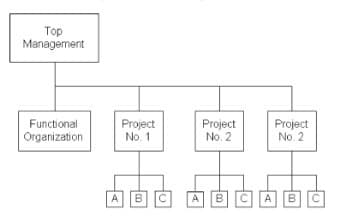Professional Construction Management and its Benefits for Construction Projects
A professional construction management team consists of professionally efficient construction managers and individuals. These professional construction management team carry out the planning, designing and construction of projects in an integrated manner.
Conflicts due to any disagreeing between the team members is minimized by keeping certain contractual agreements within the team. This help in bringing greater response and output from the management team.

Table of Contents [show]
Qualities of a Professional Construction Manager
There are certain specific requirements and proficiencies, that professional construction manager is specialized at when placed in a professional construction management. Some of them are specified below:
1. construction manager must move with the ideas of the owner and the Architectural / Engineering firm’s representatives, from the beginning of the project. If needed, essential opinions and recommendations must be suggested on the design of the plan to support improvements. He must help in bringing up a recommendation on the schedules, the technology used in construction as well as their economic factors.
2. Construction manager should be open to suggestion about alternatives for the design and the construction methods, if essential. Check the variation of cost and project time, based on the alternative suggested.
3. project development with time must be monitored, to assure no extra money is spent for work, without the knowledge of the facility owner.
4 . coordination of all the material and equipment procurement from all the contractors are dealt by the manager. The check for any due payment to the contractor, or in the quality of the products accrued, are made by him.
5. performance of any other services, that are related to the same project as demanded by the contractor are also conducted.
Professional Construction Management for Mega Projects
The professional construction management is mainly implemented for mega or large scale projects, which requires total control.
The main features of an organization representing mega projects are mentioned below:
The organizational approach for each stage of the construction project will change as the project progresses. At one point of time, it may be ” functional organization”, which later changes to “matrix organization”, which later may change into “project organization”. It is not always necessary for the project to have the same order.
Note: Matrix organization of an engineering division is a type of project organization chosen to be employed at any stage of managing the organization. When too many small-scale projects are employed, a matrix organization is implemented. A matrix organization is explained in figure-1.

Fig.1: Representation of a Matric Organization

Fig.2: Representation of Project Oriented Organization
Within the course of the overall project, the combination of the matrix, functional and the project organization system can be employed simultaneously. It is quite difficult to handle the three at the same time. This would really make the theory as well as the management system difficult but must be implemented for the cost effectiveness of the total project.
It is observed that many large successful project organization possess a strong sub-organization, which is of matrix type. This is the area where most of the control of the schedule and the basic cost responsibility is placed.
This sub-organization is known as the “cost center” or the “project”. This is taken care by the project manager himself. The cost center matrix comprises of members or participants, taken from different units of the organization.
Mainly members are supposed to submit technical reporting to the higher professionals in the organization, of different units and departments.
The final success in bringing cost-effectiveness is by making these project sub-organization into a single team. This is carried out by the leadership owned by the project manager.
Centralizing or decentralizing of the decision is crucial for the organization of the mega project.
Example of Professional Construction Management – Alaska Pipeline Project
Here we will discuss the organization and the management of a real-time project. The project is the Alaska Pipeline Project, which was considered as the largest construction project in series of 1970’s. It covered an area of 800 miles, employing thousands of workers. The total estimates were 10 billion dollars.
At the planning stage, the owner demanded the construction manager contractor(CMC) to carry out the pipeline portion. The CMC centralized the decision-making, by giving directions to 400 subcontractors and thousands of vendors. This centralisation caused a delay in the decision making.
When almost 15% of the project was completed, a new approach was put forward by the owner. He reorganized the group so the role of decision making and the role of construction management contractor is changed. The new organization comprises the owner and the CMC. This was assigned by an integrated organization.
The main objective of the system was to develop a single team, who can control every single subcontractor who is integrated within the system. Initially, there was nine tiers, i.e. from the general manager of the CMC to the subcontractors.
The new system had only four tiers, which comprises the senior project manager (of the owner) to the subcontractors. This new system bought a unified organization. This system facilitated clear communication within each level. This helped to bring up with good decisions.
Five sections of pipeline projects, in five different geographic locations was carried out by the new organization. This means decentralization was made possible by the new system. Each of them was assigned a section manager. When 98%of the project was complete, incomplete activities were consolidated and was assigned again to avoid duplication. The single bottom line responsibility where identified.
Hence the project was initially controlled by different organizations, which later was controlled and run by the integrated organization. This helped in making a small organization with decentralized profit centers.
Benefits of Professional Construction Management
The benefits of professional construction management are enormous.
- Serves the protection of the owner and the project’s objective first and the foremost.
- Overall project cost reduction, through- value engineering, time reduction, unnecessary scope and cost reduction, reduction in change of orders, contract negotiation etc.
- Integration of participants, by centralizing the communication pathways.
- Retention of best project team is advised for the client.
- Quality is checked by avoiding potential defect reasons and fault in workmen.
- The construction schedule and the design is optimized.
- Unnecessary liability of the owner is saved.
- Provision of expertise in management.
- Estimation of realistic and reliable budgets.
- Keep cost effective document controls.
Comments
Door hanging in Faversham